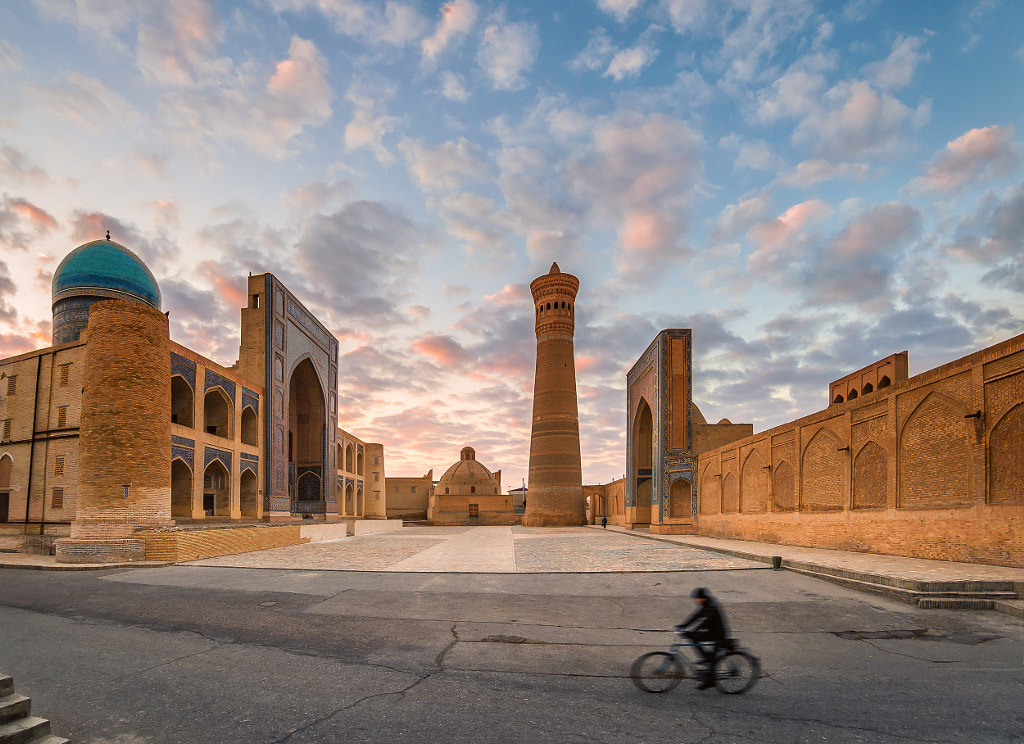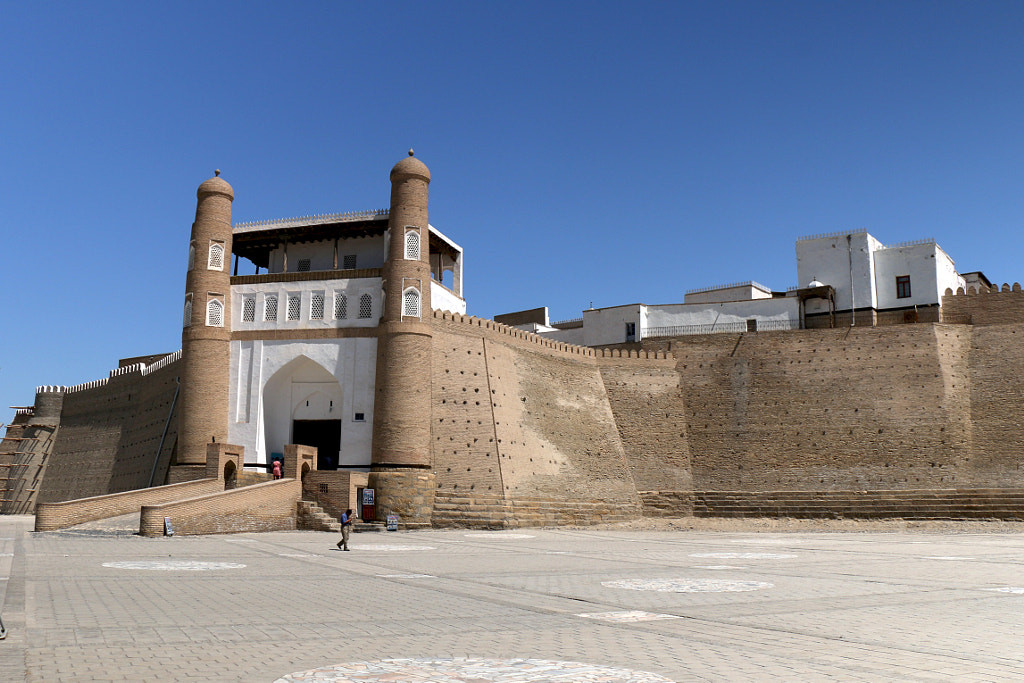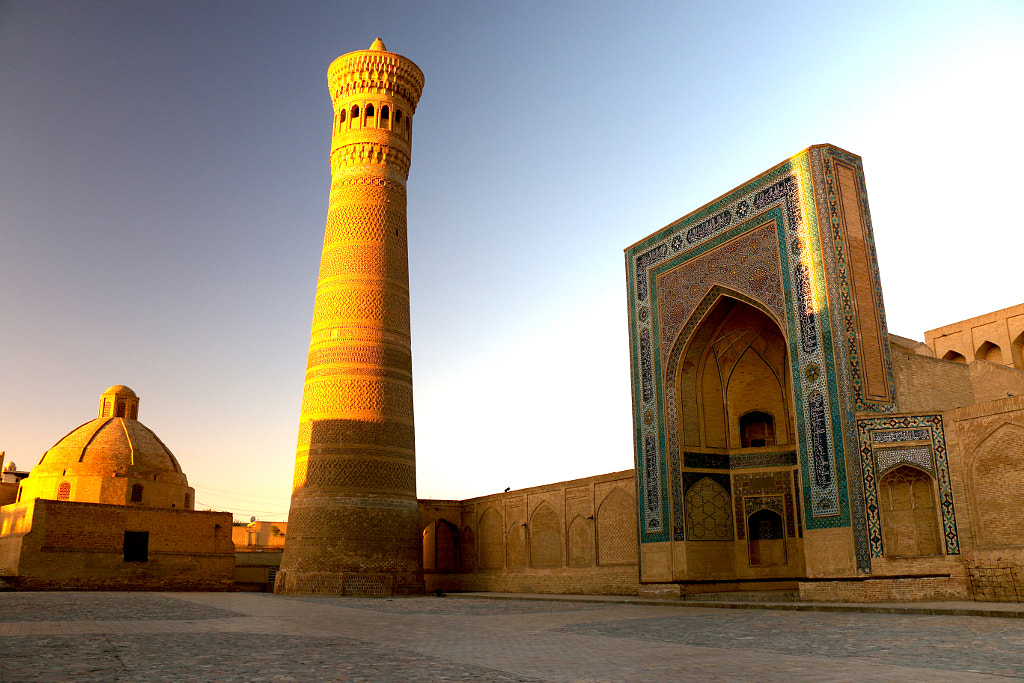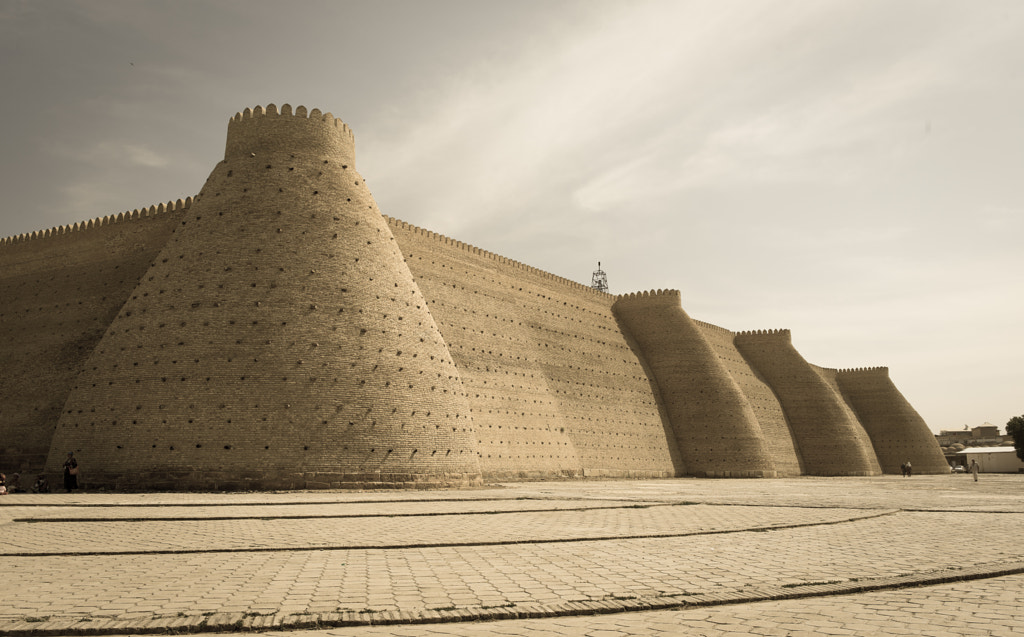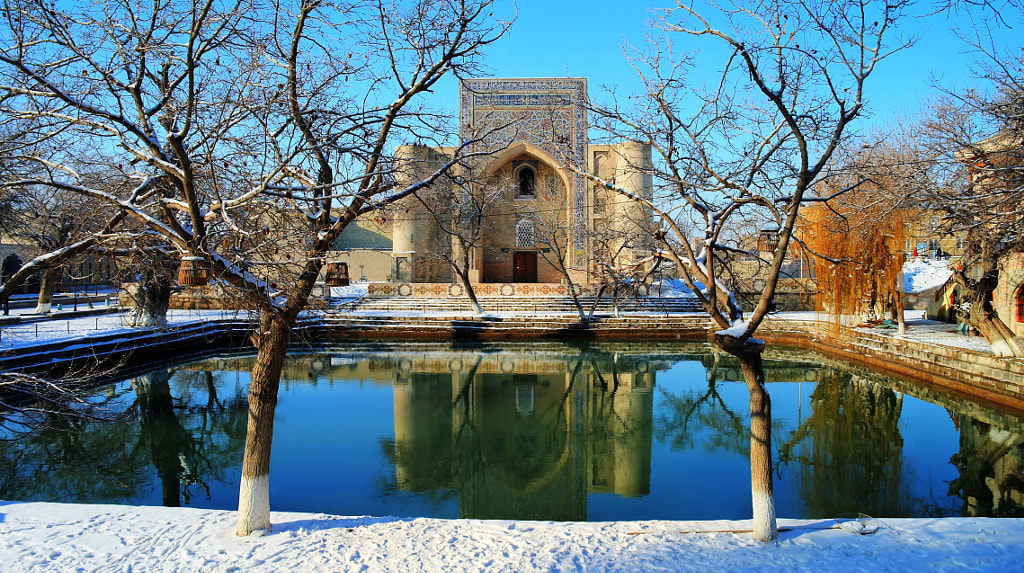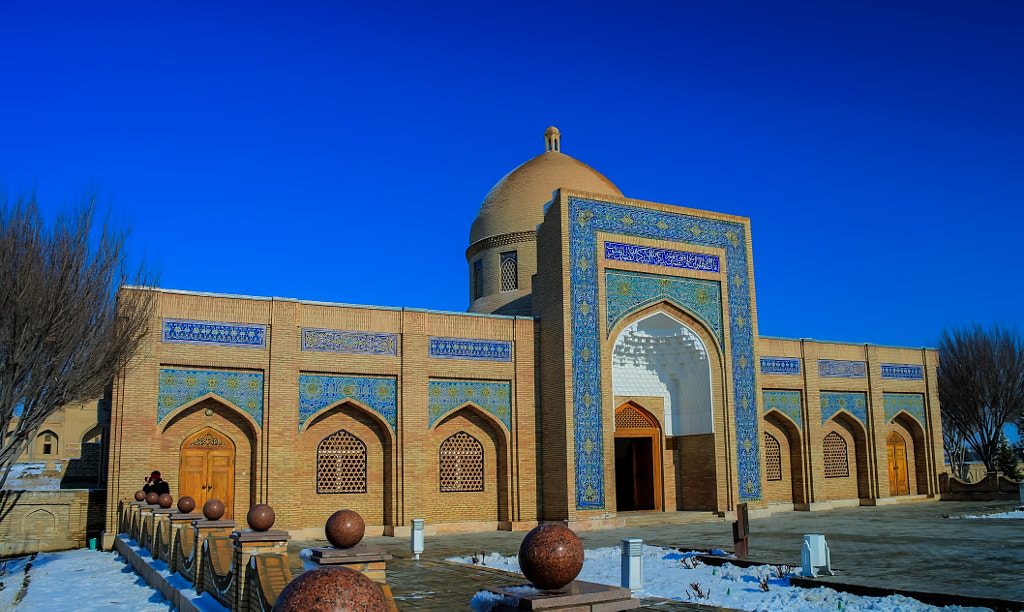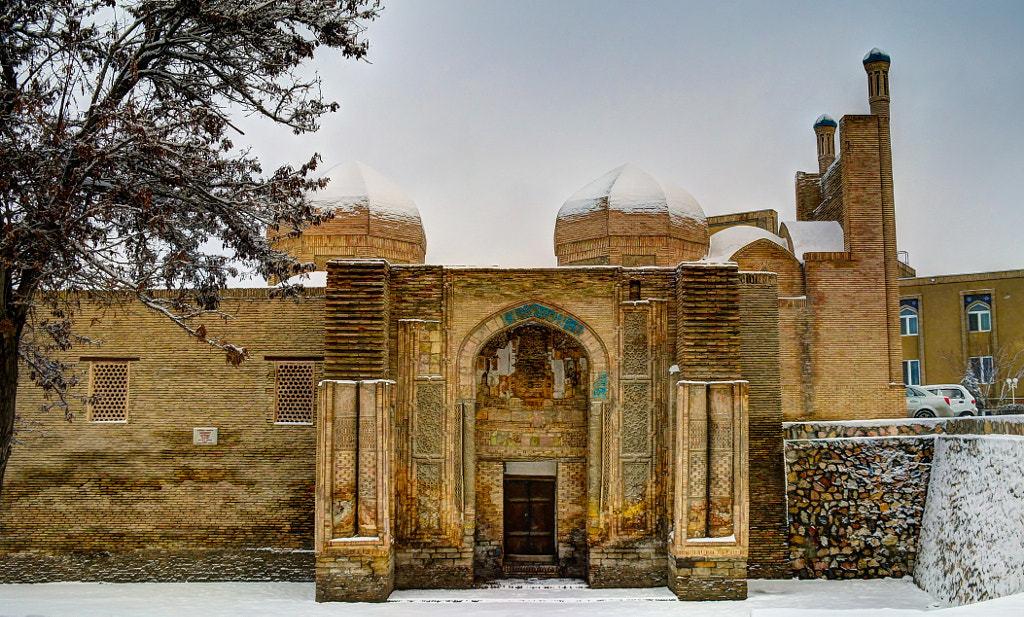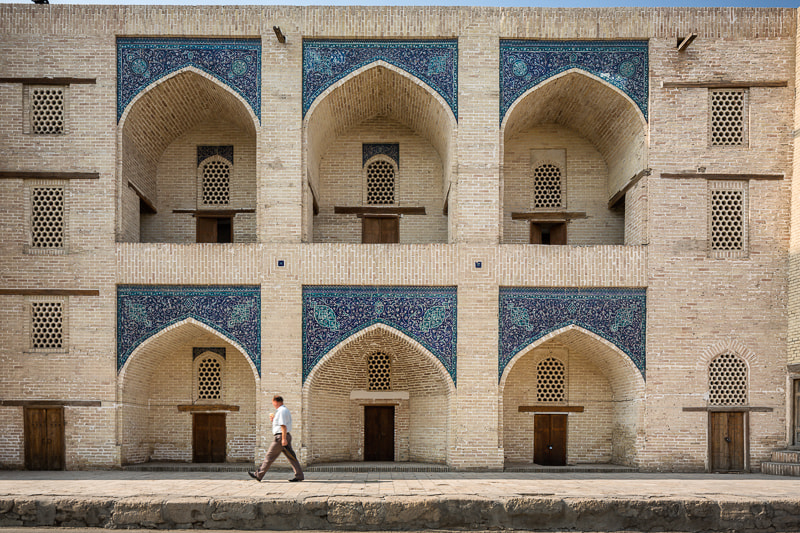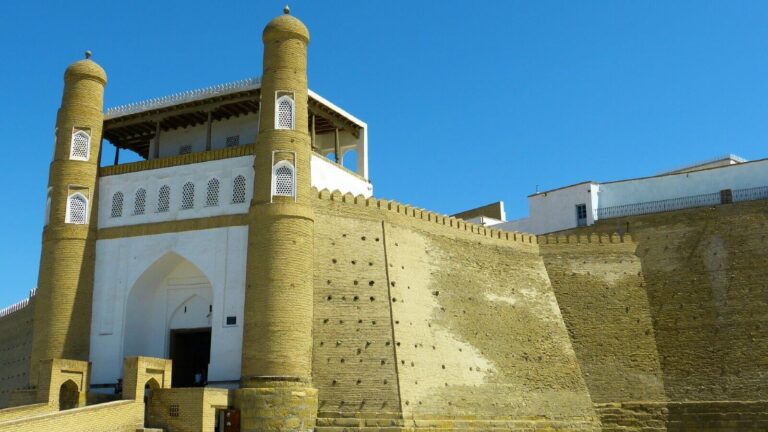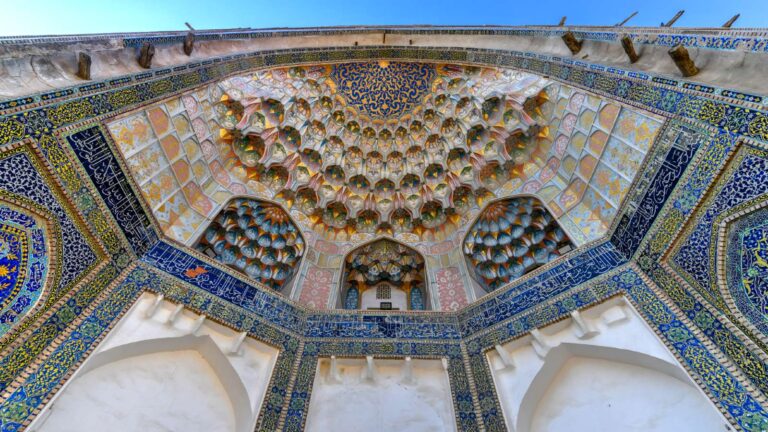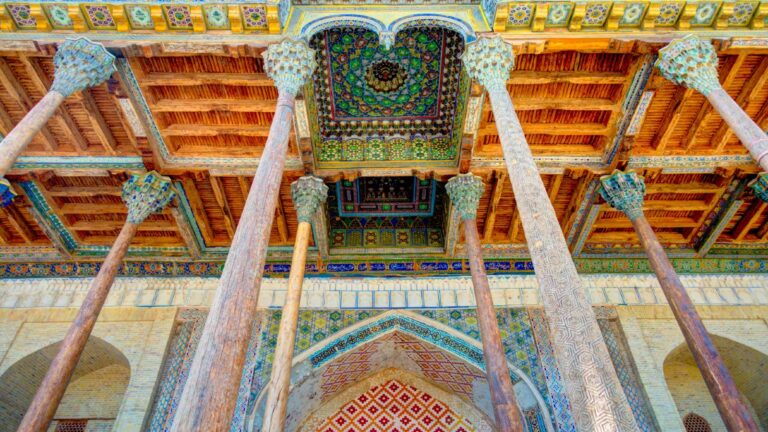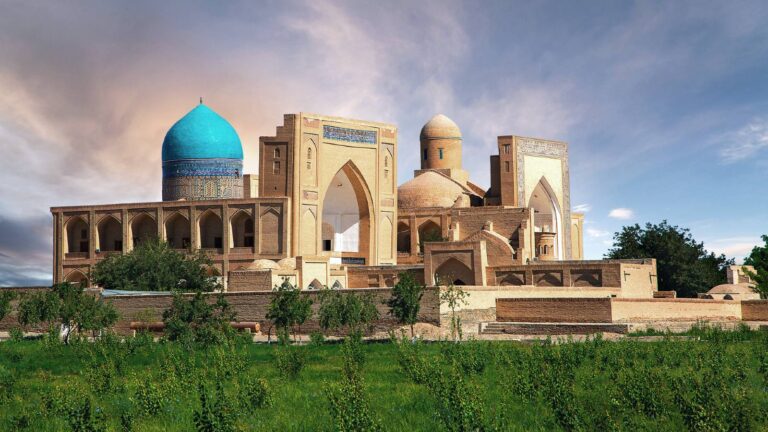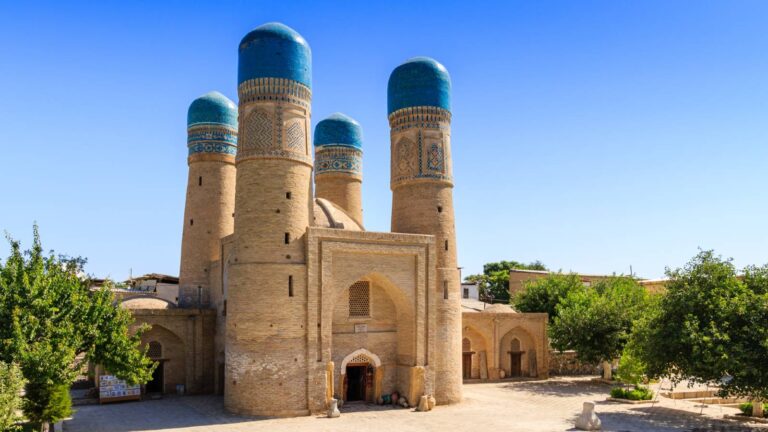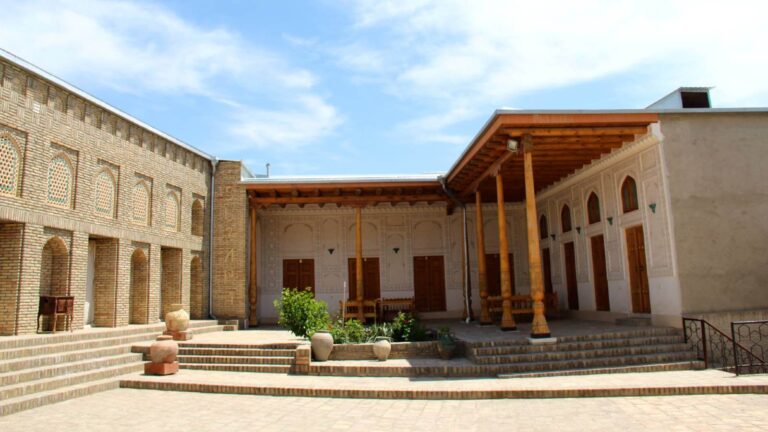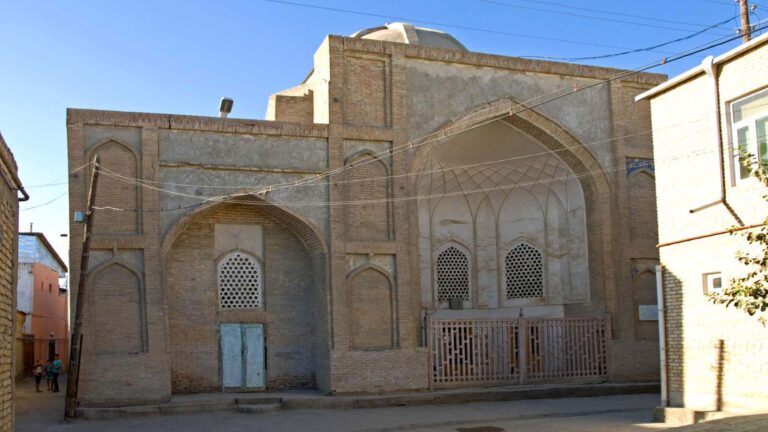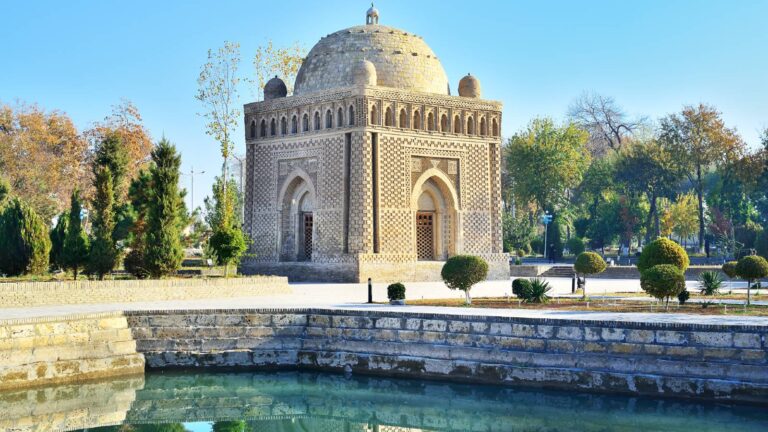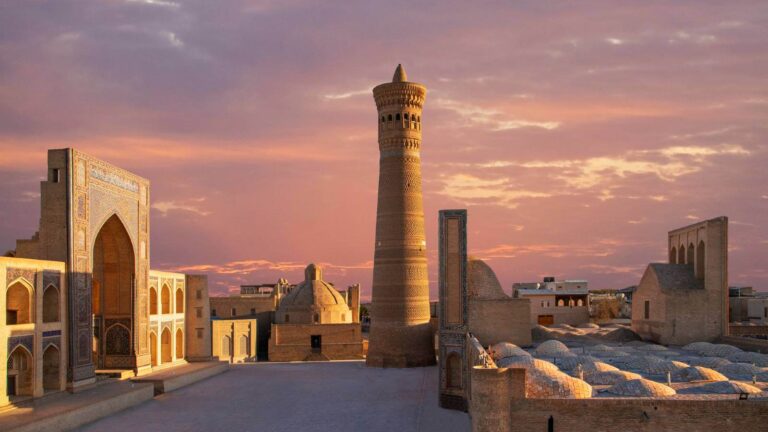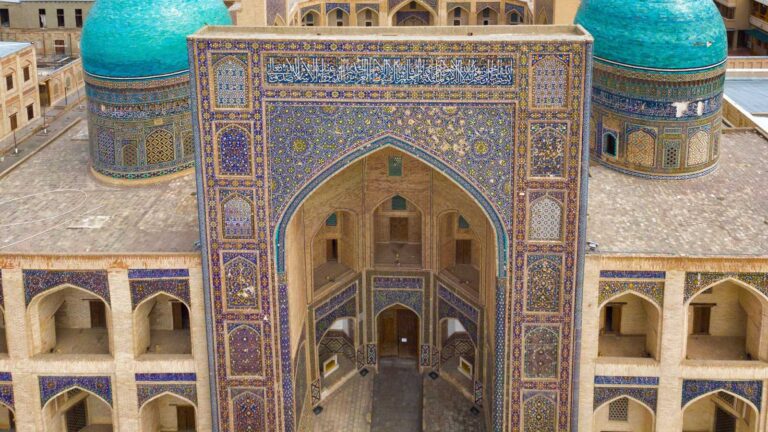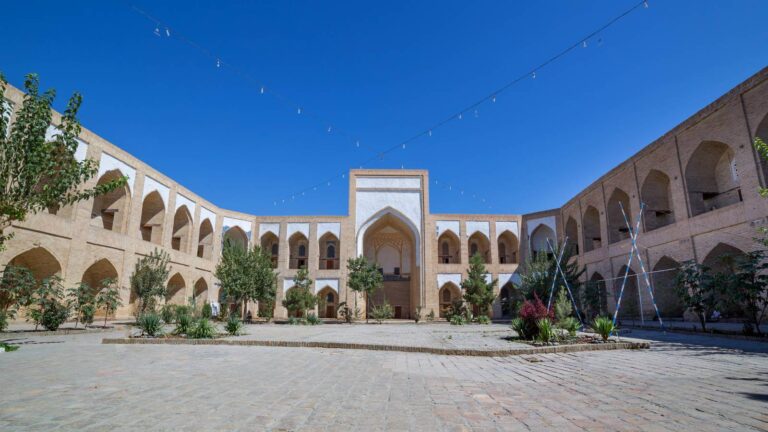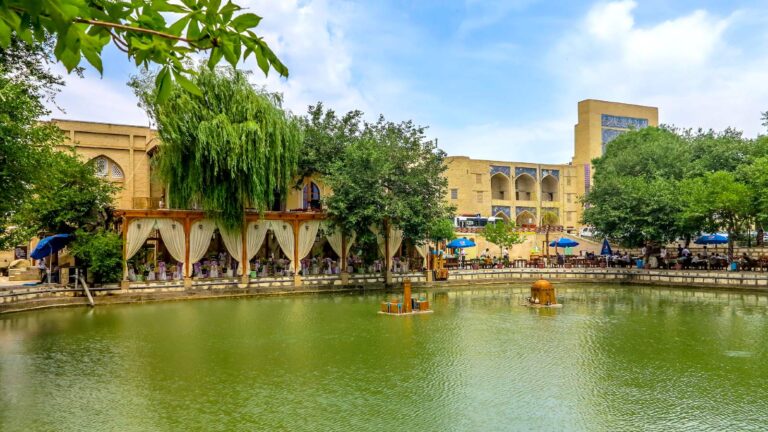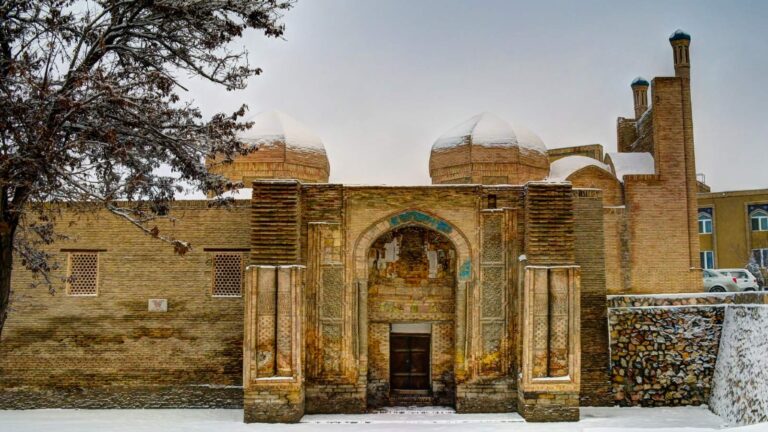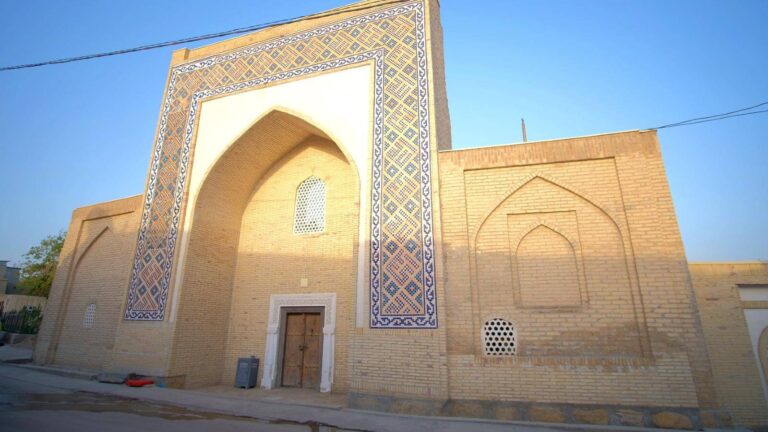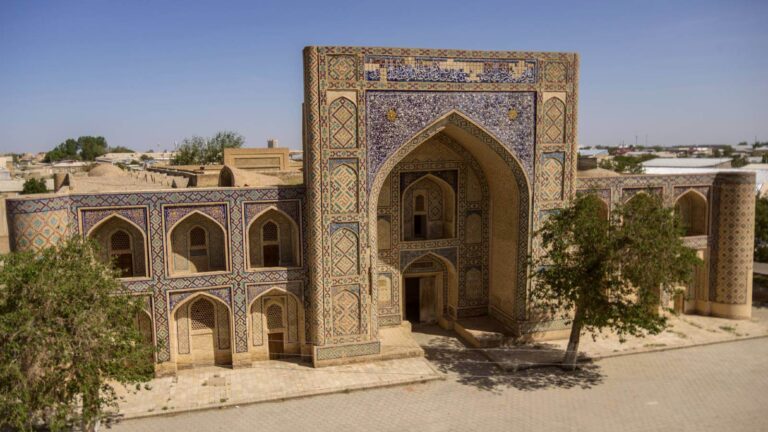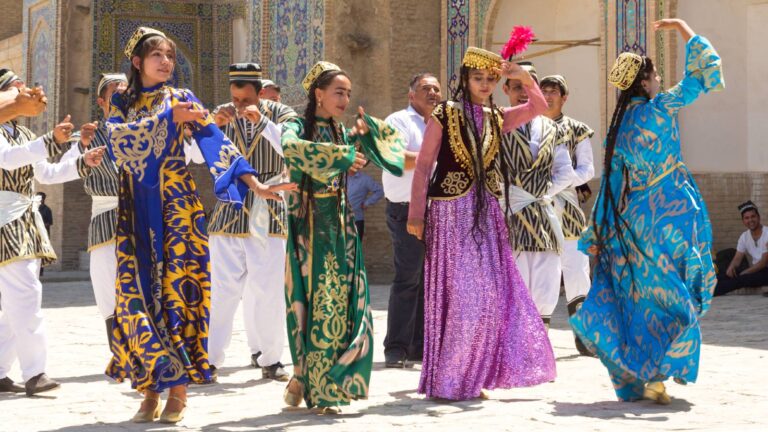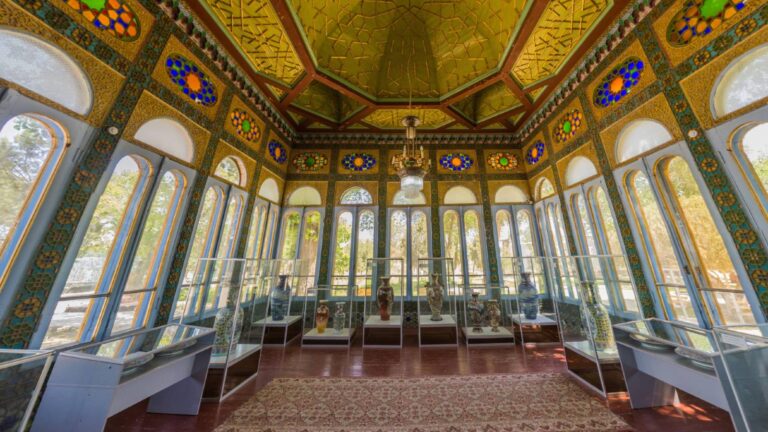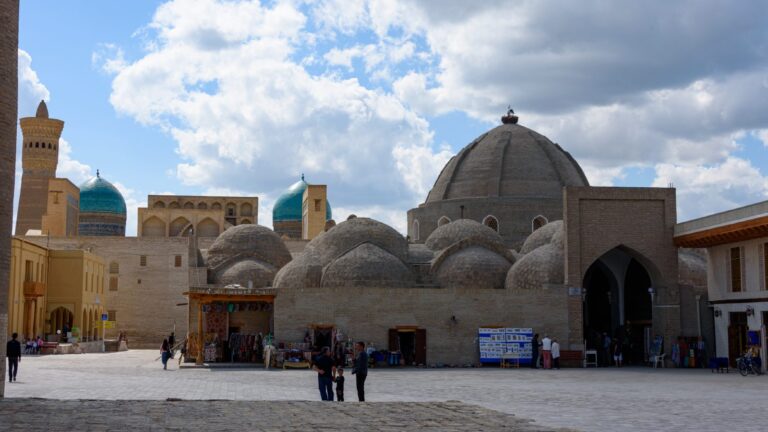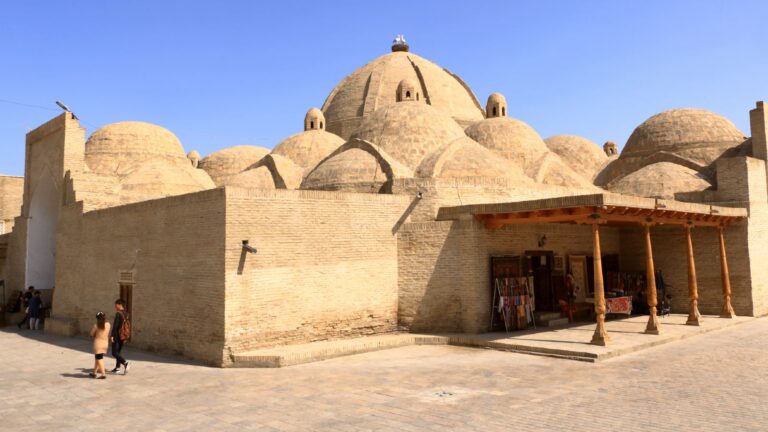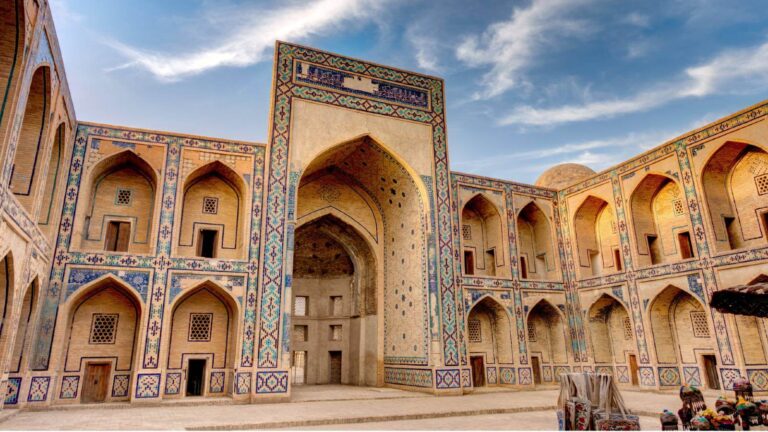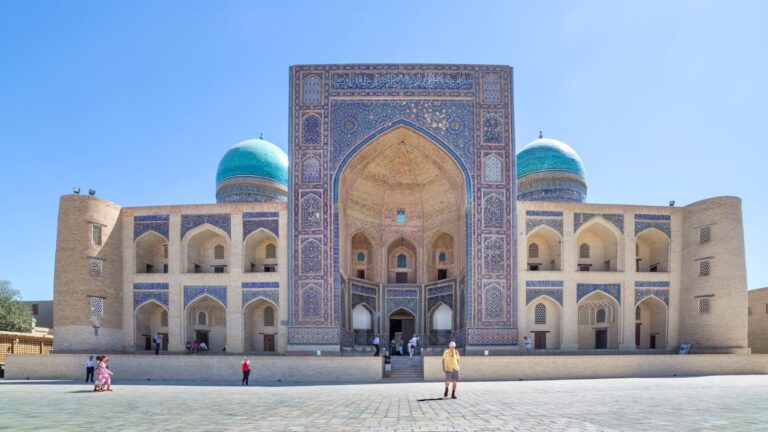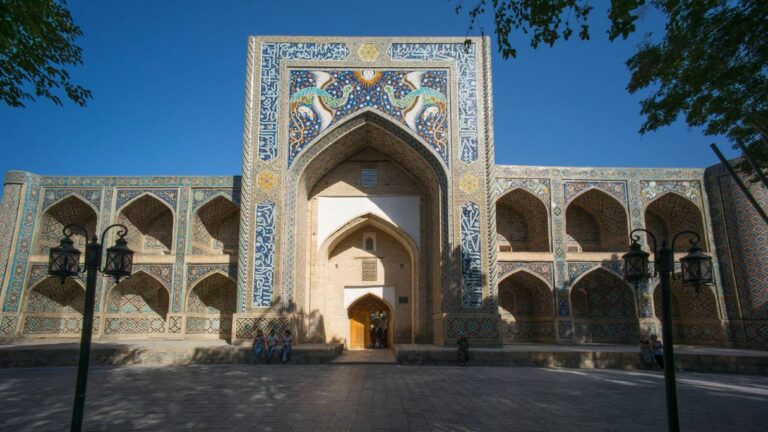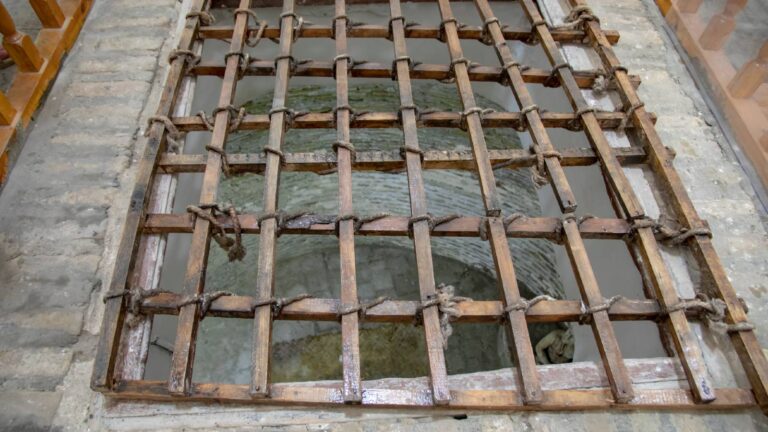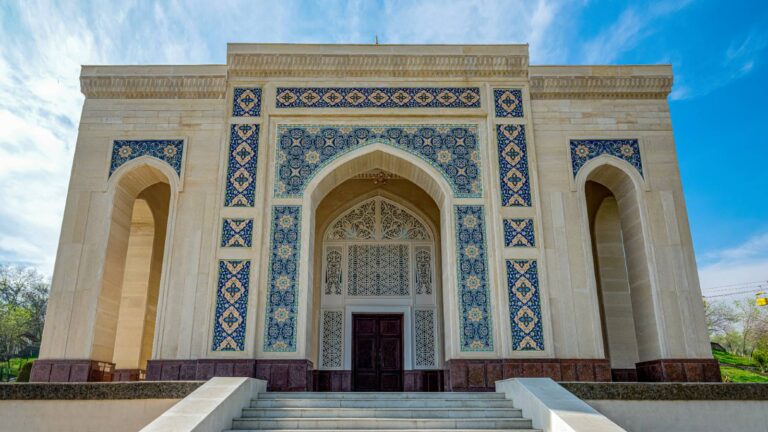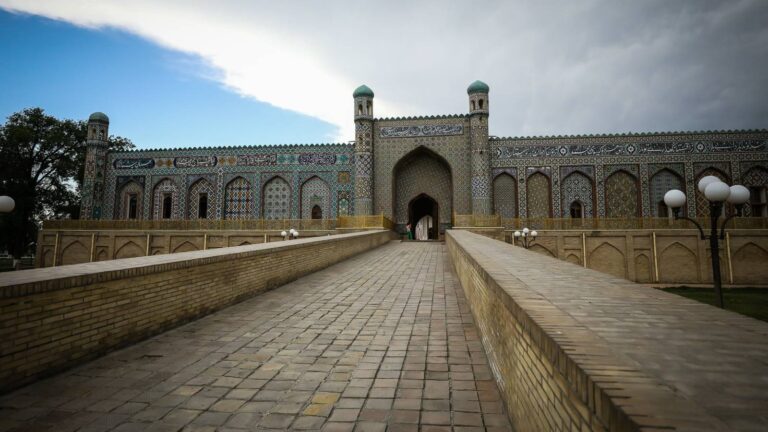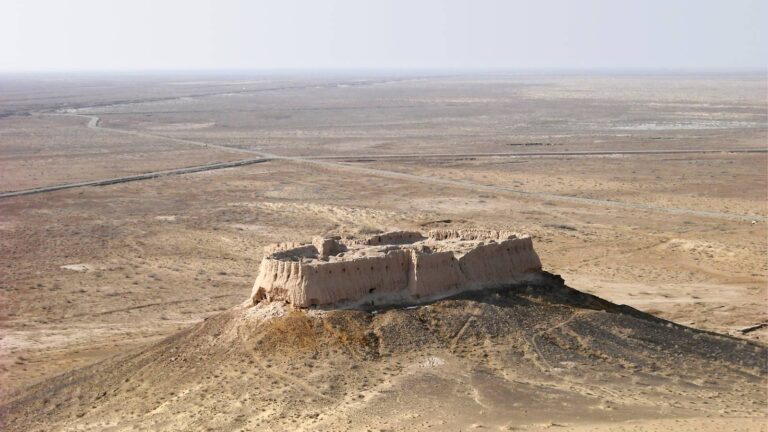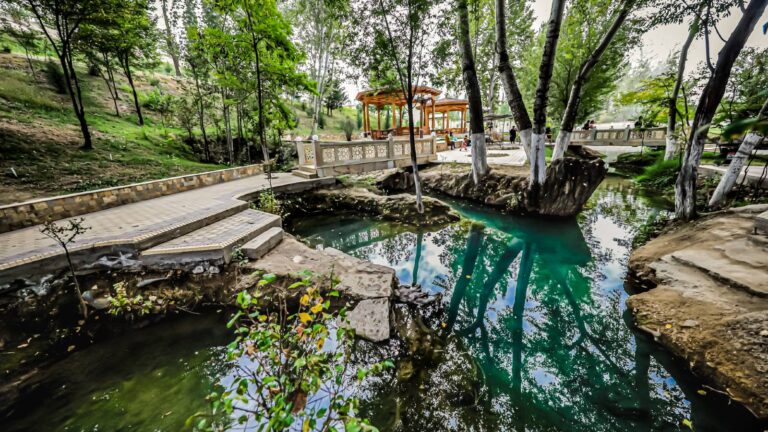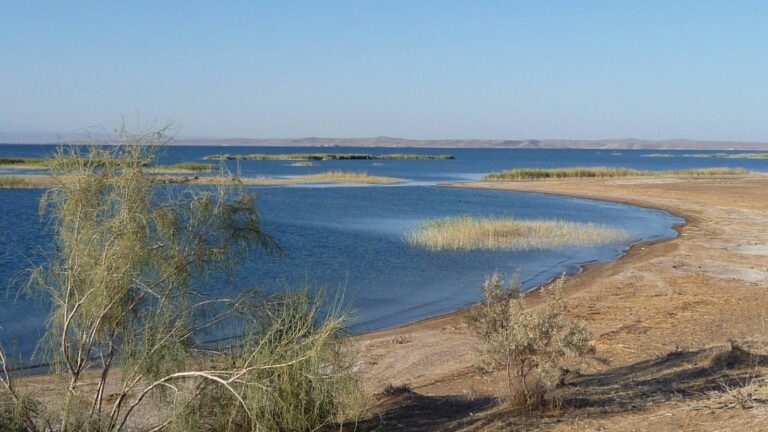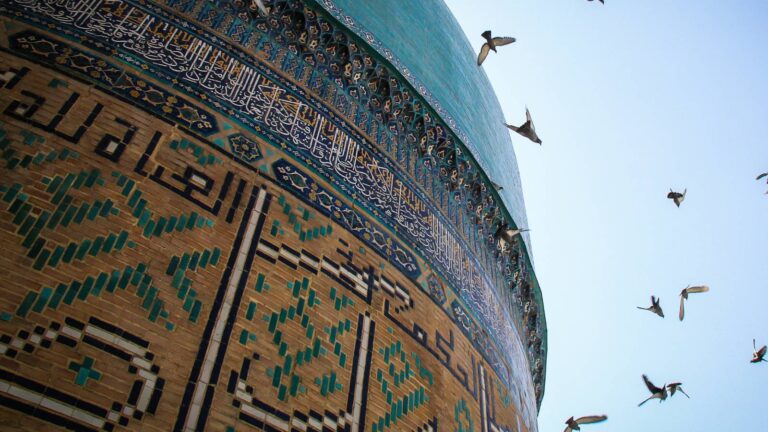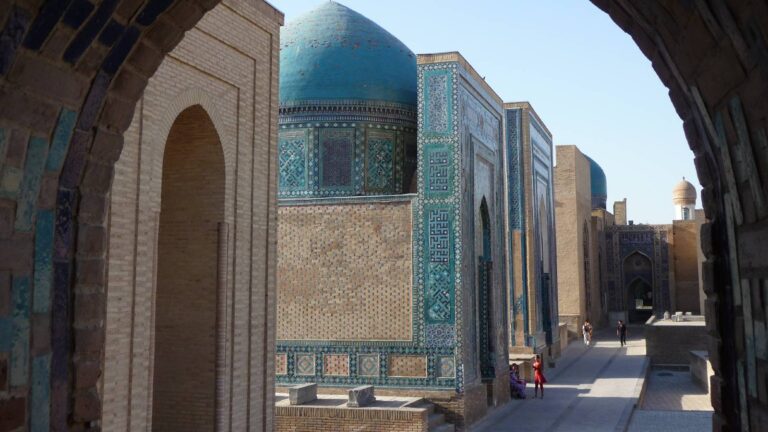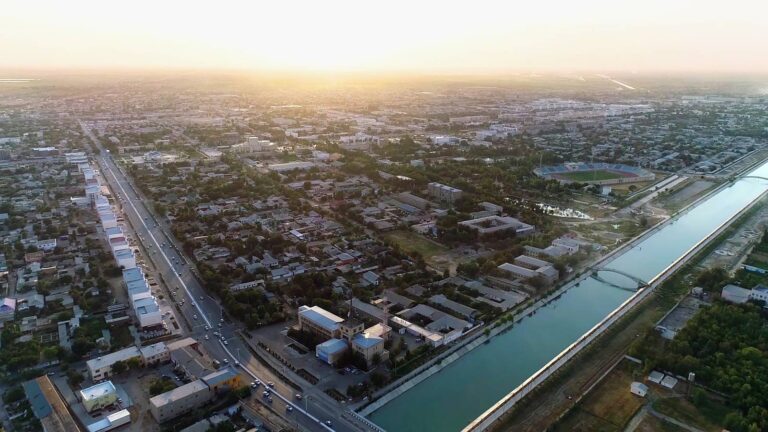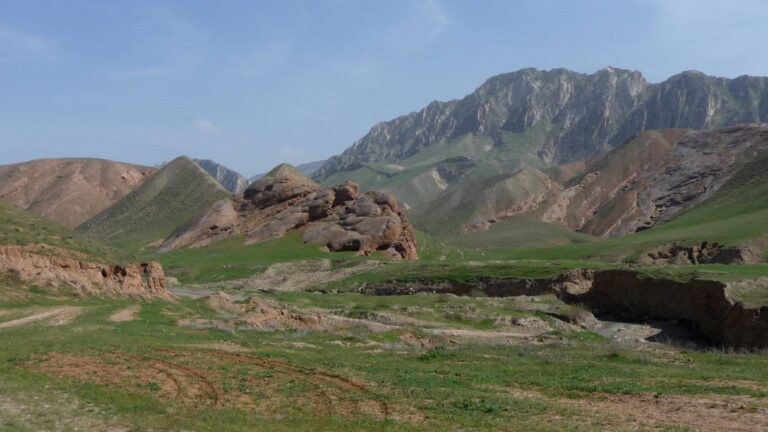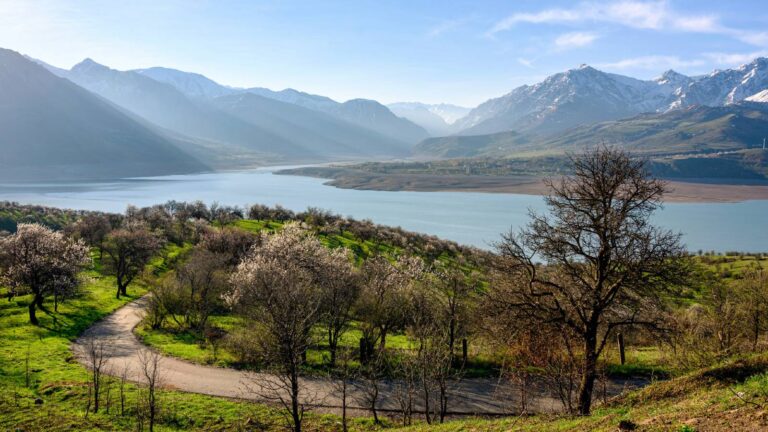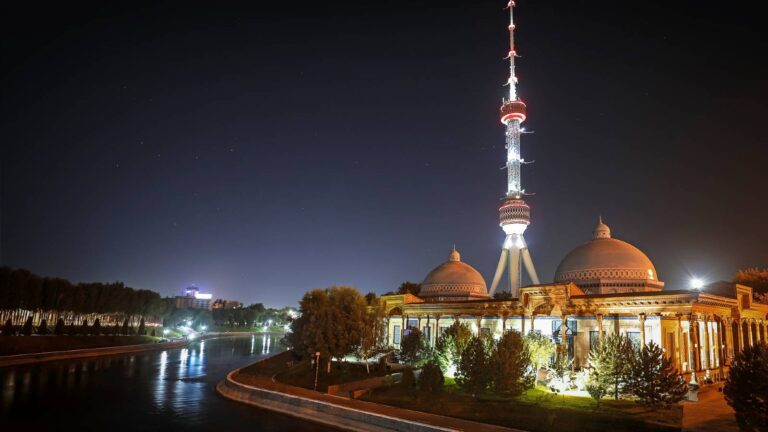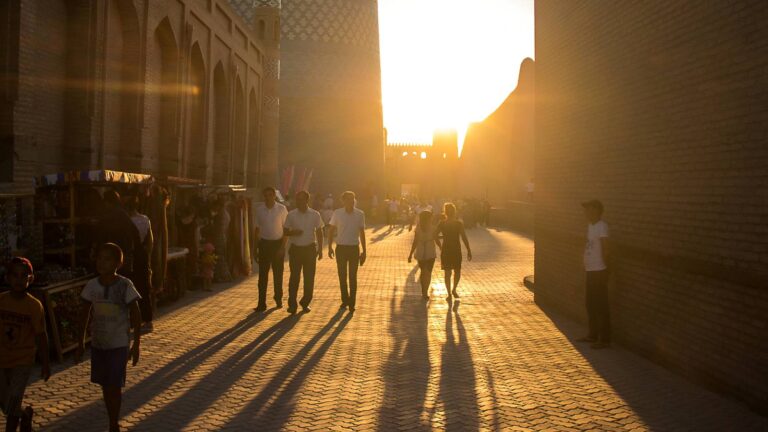The Bukhara region in Uzbekistan can be accessed through various modes of transportation, including by plane, driving, bus, and train.
By plane: The most convenient way to reach Bukhara is by flying into Bukhara International Airport (BHK), which serves domestic and limited international flights. Several airlines operate regular flights to Bukhara from major cities in Uzbekistan, such as Tashkent. The airport is located about 6km west of the city centre, and taxis and private transfers are available for onward transportation.
As an alternative, regular bus services operate between Bukhara and other cities in Uzbekistan. Bukhara also has a train station, making it accessible by rail from major cities in Uzbekistan, including Tashkent and Samarkand.
Main cities: Bukhara, the main city of the region, is a UNESCO World Heritage Site and a treasure trove of historical and architectural wonders. Explore the ancient streets, visit the Bukhara Fortress, stroll through the bustling bazaars, and admire the stunning mosques and madrasahs.
Main landmarks: The Ark of Bukhara is a must-visit landmark, offering insights into the city’s history as a royal residence. The Po-i Kalyan Complex, including the Kalyan Minaret and Kalyan Mosque, showcases magnificent Islamic architecture. Other notable landmarks include the ancient Samanid Mausoleum, the Chor-Bakr Necropolis, and the Lyab-i Hauz complex.
City of Bukhara
If you went further in Uzbekistan beyond Tashkent, to the cotton fields and the Aral desert, then you will be rewarded with the beautiful ancient cities of the Eastern civilization. Bukhara is one of them. The population of the city is very friendly towards tourists. If you get lost, they will always tell you the way and also advise along the way, where to look and what to see on the way.
In Bukhara the whole city literally consists of historical and cultural monuments that you want to look into. But not all historic buildings are museums, and not all are open. There are tourist shops in many of them, but you can enter for free and see the internal structure of mosques and madrassas, which seem to have not changed in hundreds of years.
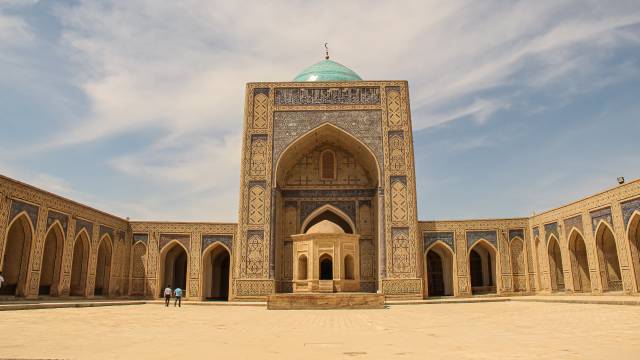
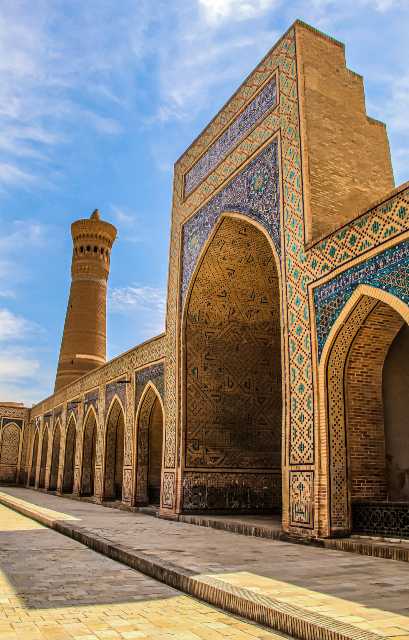
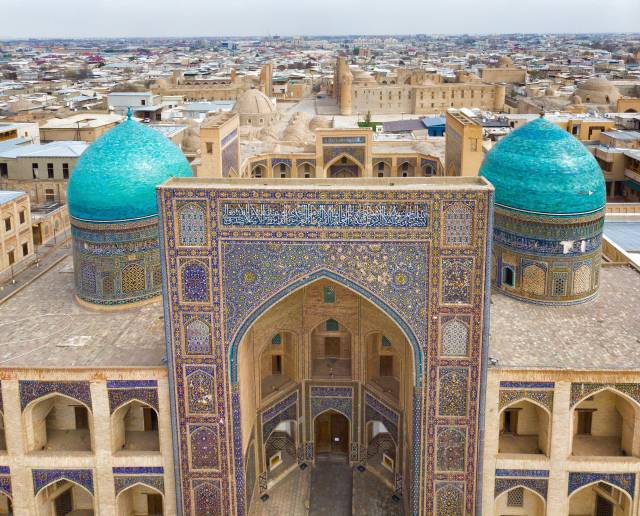
You can listen to sellers praising their goods, because the culture of trade is very developed here. It is impossible to pass by them if you walk around the city on foot. You can hear them even in the evening, there are always a lot of people and there is a lively trade, laughter and talk. Under the domes you can find postcards, souvenirs, national clothes, drawings, dishes and everything you want to buy as a keepsake of this city or country. Bukharians know how to trade, so if you stop among their goods, it will be for a long time.
Po-i-Kalyan: An architectural ensemble in the center of the city on Registan Square. It is impossible to come to Bukhara and not visit there, literally all roads in the city lead to the Kalyan mosque, the Kalyan Minaret and the Mir Arab madrasah. Only madrasah is closed for visiting, as it is still an educational institution.
Ark: The center of the Old City, the citadel palace, the dwelling of the emirs (rulers of the city). Now it is a fairly large museum complex, where you can walk for a long time, entering various former administrative buildings, courtyards, mosques, reception rooms, harem and living quarters. You can also climb the brick wall, from the height of which you can still see almost the entire city.
The most interesting activities after visiting cultural attractions in Asian countries are bazaars, craft exhibitions and, in general, the culture of trade.
Lyab-i Khauz: And, finally, the center of Bukhara. This is a huge complex of three buildings: the Kukeldash madrasah, Divan-Begi and the Divan-Begi khanaki (the building is slightly smaller than the mosque, but no less beautiful), in the center of which there is a large pond khauz. Around him are tables of roadside cafes, street musicians are playing. Music is played in the courtyards of neighboring houses and homemade food is prepared.
Almost every mosque that I passed in the city is worthy of attention. But there are also the most important ones that you should definitely get into. But it is worth hurrying, almost all museums are open from 9:00 to 17:00, but the mosque may be allowed a little later.
Bahauddin is a very large temple complex. Unfortunately, it is not even within the city, but it is worth getting to it (there is a direct bus from the city). It belongs to the order of the Naqshbandis dervishes (Sufi brotherhood), and the remains of the founder of the order are kept there.
On the territory you can go to two mosques, a madrasah and a minaret. You may not be allowed into all buildings, as these are active temples. During the season, a lot of tourists and pilgrims come there from all over the world.
As in other large Bukhara complexes, a garden is planted inside, where you can hide in the shade of trees and silence, and also feed the ducks that swim in the khauz (a large reservoir).
Magoki-Attari is a small mosque near Lyab-i Khauz, which can be easily passed by. But I stopped, surprised that it was several meters below the sidewalk. It turns out that this is the oldest mosque in the city, and when it was dug up, the city around had already grown. Now the mosque houses the Carpet Museum, which can be entered for a symbolic fee at the entrance (no more than 0.7 USD). The main thing is to pay attention to the ornaments on the walls outside, not at all the same as the usual mosaics on most mosques. Kalyan Mosque. I already wrote above that it is worth getting to the minaret. Well, look at the interior mosaics and the beautifully decorated courtyard as well.
During the early centuries of the Common Era, Bukhara and the surrounding region were part of the influential Kushan Empire, which encompassed parts of Central Asia and northern India. The Kushans were known for their patronage of Buddhism, and Bukhara served as a vital centre for Buddhist teachings and practices. Buddhist monasteries and stupas flourished in the area, attracting pilgrims and scholars from across the region.
After the Muslim conquest in the 8th century, Bukhara retained its status as a centre of religious learning. The influential Naqshbandi order was started here, and the tomb of Al-Bukhari, the great Hadith compiler, is also located in Bukhara. Gradually, more madrasas opened up, and the city became known as the “Dome of Islam.”
Celebrations
Weddings hold a special place in Bukhara’s culture, with elaborate ceremonies that span multiple days. Traditional weddings showcase vibrant attire, music, dance, and rituals, reflecting the deep-rooted customs of the region. Other celebrations include religious holidays such as Eid al-Adha and Mawlid al-Nabi, which are marked by communal prayers, festive meals, and acts of charity.
Navruz is a holiday of the new year according to the solar calendar among the Turkic peoples, in the celebration of which everyone participates and not only at home, but also in the streets and squares. Therefore, from March 21 to March 23, there will be mass walkings, concerts and people having fun in the city.
Festive dishes can be prepared right on the street and distributed and sold to everyone. I advise you to try sumalak: it is boiled all night before the holiday, turning cooking into a kind of ritual, and you can try it only once a year on these days of March.
Eid al-Adha and Eid al-Fitr are Islamic holidays, and since the majority of Bukharians are Muslims, these dates acquire great significance in urban life. Since these are the dates of the end of ritual asceticism (fasting or Hajj pilgrimage), it is customary to have fun and eat deliciously on these days. It is worth noting that sometimes even outside holiday rituals involve slaughtering rams, so if you don’t want to see this, check the calendar before you travel.
Gastronomy
These holidays do not have exact dates of celebration, they change every year. There are tourist restaurants in the city center, the average check of which is very high for locals, but rather low for tourists. The most important dish to try is, of course, palov. Not only does every city of Uzbekistan have its own recipe for preparing this national dish, but in Bukhara every family has one, passed down from generation to generation. Therefore, it can be safely ordered in different places, and everywhere it will be with its own flavor.
You will also have to get used to the fact that instead of the usual bread, bread baked in the tandoor is served to the table. And here you have to choose not between white and black bread, but between tandoor and katlama or patir. By the way, the types of bread are also very “regional” and unique in every Uzbek city.
The Bukhara region is located in central Uzbekistan, in the western part of the country. It is situated on the lower reaches of the Zeravshan River and is surrounded by the Kyzylkum Desert to the north and the Amu Darya River to the south. The region covers a diverse landscape, including plains, desert areas, and some low-lying hills.
The climate of the Bukhara region is characterized as a continental climate with hot summers and cold winters. Summers are long and dry, with average temperatures reaching around 35°C (95°F) in July. Winters are relatively cold, with temperatures dropping to around 0°C (32°F) in January. The region experiences low annual rainfall, and the majority of precipitation occurs during the winter months.
The economy of the Bukhara region is primarily based on agriculture, industry, and tourism. The region’s fertile soil and favorable climate support agricultural activities, with cotton, fruits, vegetables, and grains being the main agricultural products.
Since its foundation more than 2 thousand years ago, the city of Bukhara has become a trade point through which the Great Silk Road ran. The oasis city of Bukhara is located in Central Uzbekistan by the Zarafshan River along its lower reaches. Merchants stopped in Bukhara before setting off on the road through the Kyzylkum (Red sand) and Kara-Kum (Black sand) deserts.
As one of the prosperous medieval cities of Central Asia, Bukhara has become not only a center of international trade, but also a center of spiritual, cultural and religious values. Trade caravans plying along the Bukhara section of the Silk Road were enriched with local goods. Bukhara was famous for its textiles; the fleece of lambs of the Karakul breed (broadtail), silk, cotton, leather, carpets, clothing, as well as gold embroidery and metal products were in great demand. Many of these crafts are still practiced today.

